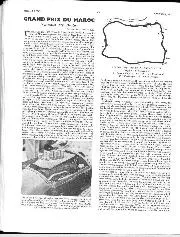The race ran on October 27 as a non-championship affair on a fast, new circuit laid out in Anfa, on the edge of Casablanca, in what turned out to be a precursor to a full-blown points-scoring grand prix the following year. That occasion at the end of the 1958 F1 season is marked in history for Mike Hawthorn pipping Stirling Moss by one point to become Britain’s first world champion – but overshadowed by the awful tragedy of the fiery accident that would claim the life of promising Vanwall ace Stuart Lewis-Evans. A year earlier, a full field of F1’s finest travelled to north Africa and relished the experience – mostly.
Following two days of practice, a day off on the Saturday and a colourful build-up to the race that included a ceremony involving the King of Morocco, a grand prix typical of the era played out: mechanical maladies depleted the field, on a track that offered a stern test of both man and machine.
Up front, Jean Behra – the swashbuckling Frenchman who somehow never won a points-scoring GP – dazzled in his Maserati 250F, seeing off the depleted Vanwall challenge: Moss had flown home early with a fever; Tony Brooks took pole position, only to be side-lined in the race with a terminal misfire, and Lewis-Evans finished a fine but distant second, half a minute down on the jubilant winner.
Among those to record DNFs, Mike Hawthorn’s Ferrari V6 broke early on and his Mon Ami Mate Peter Collins went off twice, the second ending his chase of Behra once and for all. Juan Manuel Fangio did make the finish, but the newly crowned five-time world champion laboured home only fourth. Even the maestro made mistakes: he was delayed when he dented the nose cowling of his 250F on a straw bale and needed a push-start from marshals to get going again. But it was his second pitstop that was more unusual – and plain comical, due to flustered officialdom. And it was all Rob Walker’s mischievous doing.




